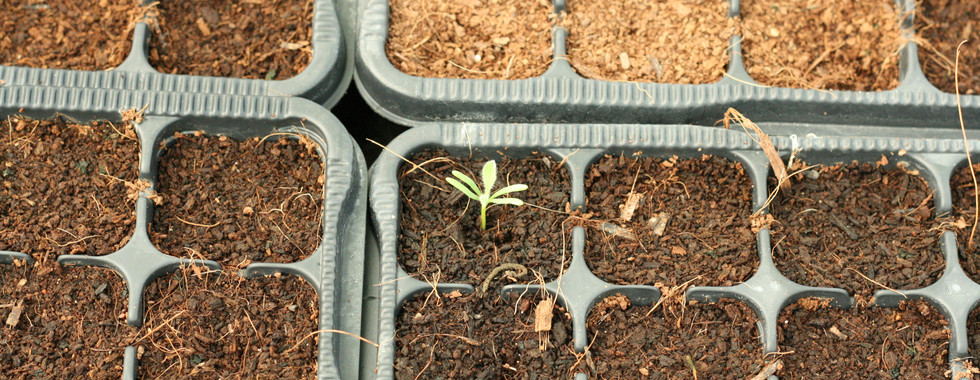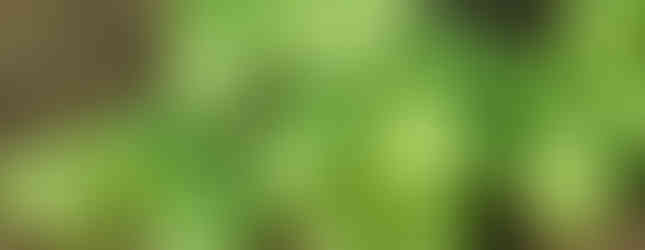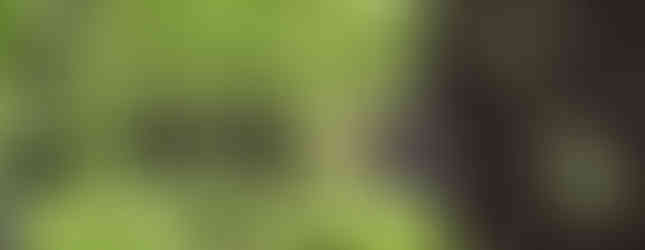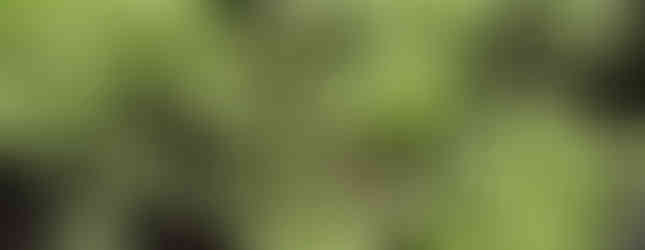Sowing seeds in trays
- GardenMaestro
- Mar 18, 2023
- 8 min read
Whether you are a novice gardener or a "seeded" professional, chances are you are going to cross paths with or want to experiment with growing plants from seed, it is after all the way that nature propagates and distributes most plant species.
So it should be simple right? In theory perhaps, but in practice not always! This post hopes to address some of the basics of plant production from seed.
This article deals specifically with the sowing of seed into trays (not direct sowing into the soil), the basics are the same though, and I will cover direct sowing or broadcast sowing in another post.
Basics
Most gardeners will encounter seed sowing when they look to grow their own vegetables or seasonal (or annual plants). In most parts of the world, there are distinct summer and winter seasonal plant species (including vegetables), this means that the seed for these plants are sown at the start of summer or winter and produce flowers or fruit either midway or towards the end of that season - hence the term seasonals. Seasonals are also sometimes referred to as "annuals" (by comparison to biannuals or perennial plants), as they complete their entire life cycle in one season (annually). Due to the weather in the Middle East, most seedling production takes place during the winter months as very few seasonal plants perform well during the summer, summer seasonals tend to be the hardiest and most resilient of plants like Portulaca and Vince (Catheranthus).
Of course, most other biannual or perennial plants can also be produced from seed using similar techniques that are described below.
What to check for when buying seed
When buying seed always check the expiry date on the packaging, seed that is old or "expired" will have a lower vigor and germination rate than fresh seed.
Avoid buying seeds that have been stored in shop windows or storefronts, these will have been exposed to direct sunlight and heat, which will also affect other germination (even if the expiry date is still valid).
Ensure the packet or seed packaging is intact, most seed packets are hermetically sealed to reduce the influences of humidity and storage pests.
If buying seed from abroad via online shopping sites be aware that any seed or plant products entering the country are subject to confiscation if the correct phytosanitary documentation is not applied for and supplied on import of the products.
Using the seed you harvested yourself
If you are going to sow seeds that you collected yourself or obtained from a friend check the contents of the packet before sowing, with a bit of experience you will be able to tell a cabbage seed from a carrot. Check the labeling if you have labeled and noted the collection date, if the harvest date is older than 24 months the germination of the seed may have degraded.
Check there are no storage pests amongst the seed.
https://www.gardenmaestro.me/post/seed-collection-and-storage
Sowing
With seed sowing there are a few points to consider, the first is a little know fact, but very important. Seeds (depending on the type) either require the presence of light to germinate, or they need darkness to germinate. The general rule of thumb is that a very small or "fine seed" - say anything under 2mm in diameter, requires light to germinate, anything larger than this requires darkness. So when sowing anything under this 2mm size, you should never cover the seed with soil, anything over 2mm needs to be covered.
The two main methods of seed sowing are direct and tray.
As these terms suggest, direct sowing means that the seed is sown directly into its final location, and no transplanting of the seeding is required. The disadvantage of this method is the seed is more vulnerable during sowing and germination and generally has a higher plant mortality rate than tray sowing. Some of the things that can influence this are birds and ants collecting the seed, drying out of the seed due to exposure and wind, high soil temperatures, over watering, slugs, and snails.
With tray sowing (or any other receptacle), the seedlings are germinated in a controlled environment and then transplanted into their final home, if done correctly the plant mortality is much lower than with direct sowing.
You need to use a sowing tray (or similar receptacle) that is at least 5 to 6cm deep and it must have clear drainage holes, the soil should be filled to between 0.5 and 1cm from the top of the container. I often see people using plastic pots for this purpose (which is fine), but then they only fill the pot halfway with soil, which is not okay. When the seedlings germinate they look for light and will grow towards this, if they still have to grow up to 4 or 5 cm to reach bright light their stems will be stretched and weak making the plant weak, deformed, and susceptible to disease.
It is "best practice" to use a flat seedling tray (sometimes called a "flat") for fine seeds or a cavity-type tray for larger seeds.
Cavity trays work best with larger seeds, as a single seed is normally deposited into each "cell" and therefore one seedling will germinate in each cavity ensuring the correct spacing of the seedlings when they germinate, this also makes it easy to remove the seedlings once they are ready for transplant. You can also consider "double sowing" into cavity trays for plants such as Basil, this will give you two plants growing adjacent to each other, resulting in a denser plant when planted into a container.
The trick to successful sowing is the spacing of the seeds (if you are not using a cavity tray). If the sowing density is too high then the germinating seedlings compete directly with each other for food and light, normally resulting in very stretched seedlings (a condition known as "wire stem"), which makes them susceptible to fungal infections. Densely sown seedlings are also very difficult to separate, resulting in higher transplant mortality. Very fine seed is also prone to clumping when you sow it, a tip is to either mix the seed with a small quantity of fine, dry soil, mix this well and then sow, the sand acts to bulk up the volume and make it easier to distribute the seed over the sowing area. Better spacing means that the "starter plants" will be healthier and better developed, and better spacing means improved air circulation between the seedlings and less chance of fungal infections.
Locally, good-quality potting soil can be used for the germination of seedlings in the absence of specialized seedling germination blends Just make sure the mixture is light in texture and drains well, it is not necessary to add additives like perlite, vermiculite, or peat/ coco-peat to a seedling germination mixture.
If the seed is to be covered, the other rule to remember is "double the diameter of the seed", this means if the seed is 5mm in diameter, it should be covered with 10mm of soil. As mentioned above never ever cover the seed too deeply, the germinating embryo may not have sufficient energy reserves to be able to lift the cotyledons free from the soil.
If you are sowing batches of different seeds a good idea is to mark the trays with the kind and variety of the seed as well as the date that you are sowing them.
A particular note to those who intend growing vegetables, try to stagger the sowing of seeds such as lettuce, carrots, and cabbage, else your entire crop will mature at the same time and you will have an excess of produce one week and then nothing after that, normally stage the sowing of these items at 7 or 14-day intervals - this will ensure that you have a continuity of fresh vegetables even though more preparation work is required. This is less of a concern with crops such as peppers or cucurbits which produce over a longer period of time, or flowering seasonals where you would like them in flower all at the same time.
Watering is the next important issue. Enough water so that the soil is moist/ damp, but not wet. The amount of water depends on the size of the container you are using for germination and the type of soil being used. Droplet size during watering is also important, you don't want your young seedlings to be dislodged by heavy streams of water, this will result in poor quality, skew seedlings with poor shallow roots. If you do a lot of seedling production, invest in a good watering can with a good quality "water rose" on the end, this will provide an even distribution of water - remember the water rose of the can, faces upwards and not down!
Make sure that you use good quality water for the germination process, water with a high pH or high salt content will negatively affect germination.
If you have a small batch of seedlings you can use something like a spray bottle with a fine mist in order to keep the soil damp and prevent dislodging the seeds and soil; the exact scheduling of the watering is dependent on the open environment in which the seed trays are being cared for - so you need to check regularly.
Never water seedlings in the evening, try to water late afternoon so the soil has a chance to dry slightly; damp or wet soil at night creates the right conditions for fungal spores to germinate on or near your seedlings
If the soil is too wet/ damp it can promote the germination of fungal spores that are in the soil and air around us, the main ones that attack young seedlings are Pythium and Phytophthora. These are responsible for conditions such as "damping off" and root rot, these conditions are normally fatal to young seedlings and can spread quickly in germination trays - especially if the seedlings are overcrowded or growing in under-ventilated conditions.
The germination time of seedlings varies from 4 to 14 days (as a generalization), this is dependent on the seed type as well as the conditions under which they are being germinated (mainly temperature associated). Seed may germinate all at the same time or sporadically over a period of time (this normally happens with old seed or seed which has a thick seed coat).
Seed dormancy is the term used for the state of "hibernation" that most seeds transition through before the right conditions are met for germination. The need to break the dormancy artificially only really comes into play with seed types that have a thick or woody testa (or seed coat) - like palm seeds for example. I'll cover this in a separate post, which would not normally be encountered during home-garden projects. However, certain types of seeds such as beans and peas can be soaked overnight in water, this allows the water to permeate and saturate the seed coat, leading to more uniform and faster germination of these species once they are sown.
Seed cotyledons serve two functions in the seed. They are the primary food source for the seed while it is in its dormant stage and, their second function is that they become the first set of leaves for the plant once it starts to germinate, these are normally slightly rounded and don't look anything like the final leaves of the plant. These are soon replaced by the first sets of primary leaves.
Transplanting
Transplanting of seedlings into their "final home" should take place once the seedling is starting to produce its second set of "true leaves".
This should be a careful process to ensure that you are able to extract the young seedling out of the tray or container with the least amount of damage.
Prepare your planting area in advance, some seedlings require little with respect to adding organic matter or fertilizer, while other crops (particularly vegetables) require significantly more.
Remove the seedlings from their germination container trying to take as much of the root system (intact) as possible.
Plant them to the same soil depth as which they were in their germination container, planting them too deeply can result in stem/ collar rot and the seedling dying.
Water them as soon as possible after transplanting.




































Comments